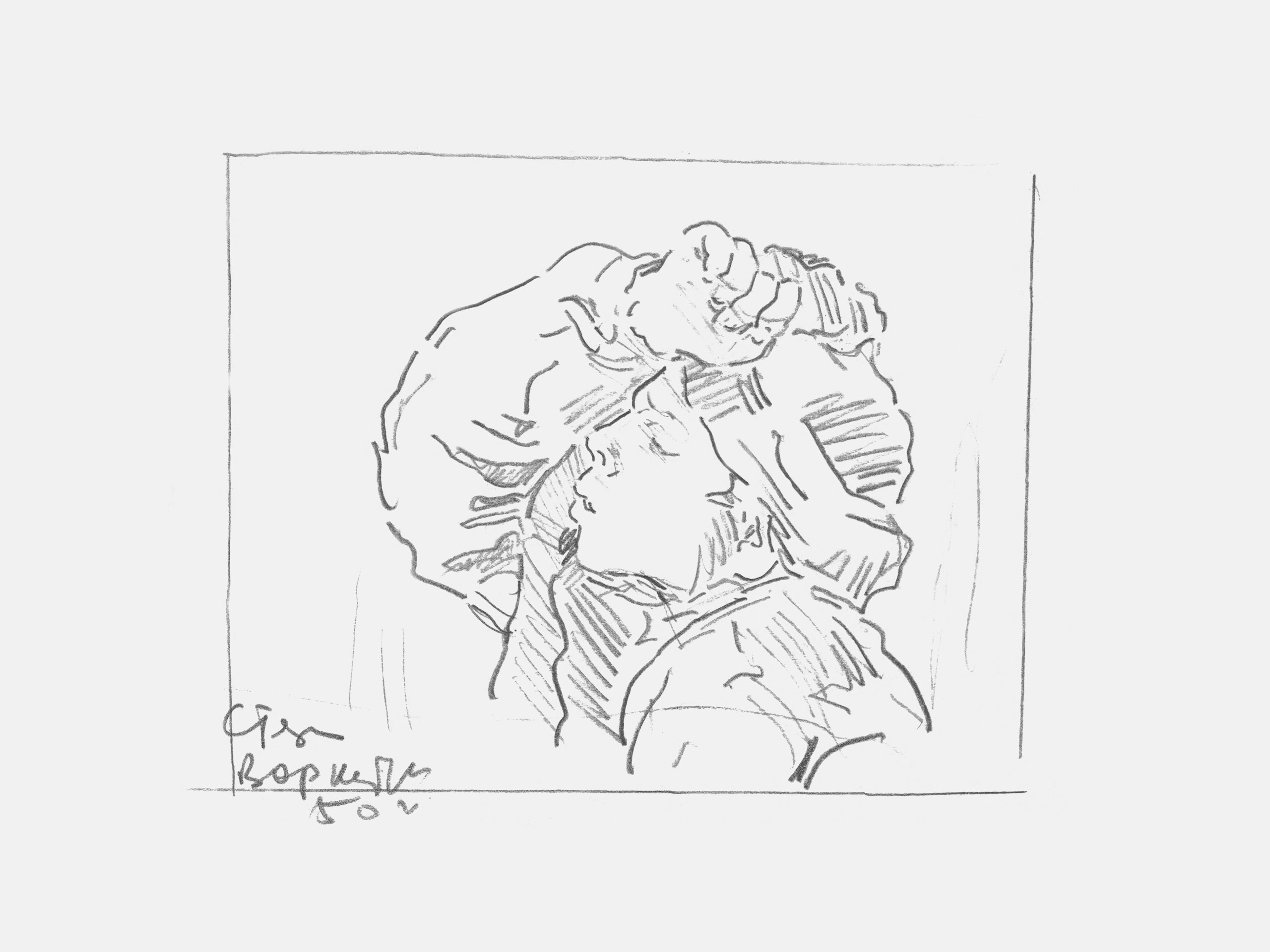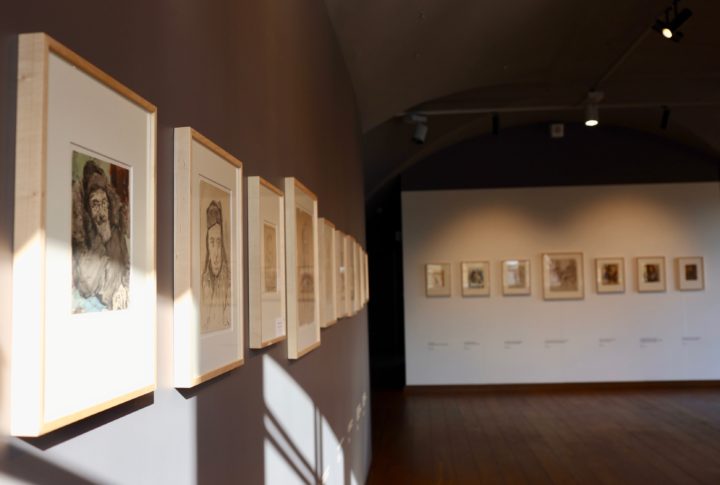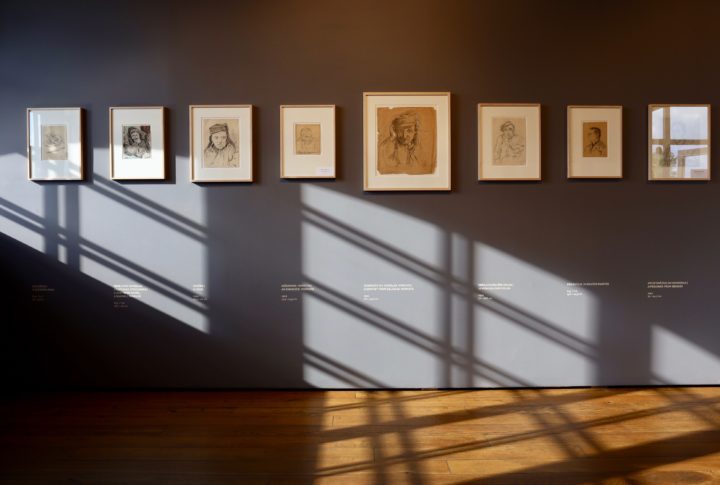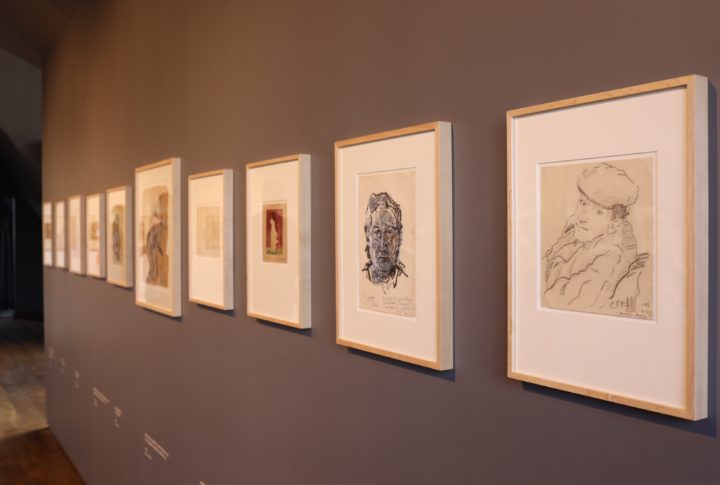ART FROM THE GULAG

Solomon Gershov
The life of Solomon Gershov (1906–1989) is emblematic of the fate of many artists stamped down by Josef Stalin’s repressive regime.
Gershov was born in 1906 in Daugavpils (Dvinsk) into a family of a bookbinder. In 1910, the Gershovs moved to the neighbouring city of Vitebsk, where the boy would attend a Jewish school before starting a course at a Realschule. His parents hoped their son would train as a rabbi. Instead, the artistically gifted boy went to study under the painter Yehuda Pen, founder of the first Jewish art school in the Russian Empire. Three years later, he joined the Vitebsk Freelancing Artist Studios, where he would learn under Marc Chagall and Kazimir Malevich – by that time, Vitebsk had become a major hub of the Russian avant-garde. In 1922, Gershov moved to Petrograd, where he would attend the College of Arts and Education and the Institute of Art and Technology and train at the studio of Pavel Filonov whilst pursuing a blossoming artistic career in different visual mediums. In Petrograd, Gershov’s inner circle of friends and associates included young and innovation-seeking stage artists, dancers, authors and composers. Chief amongst them was Dmitry Shostakovich – his friendship with Gershov would extend into the 1970s.
Gershov organised his first solo show in 1926. Sadly, all his earlier work was destroyed in 1932 following his arrest for “slandering the Revolutionary Artists Association”. With his artist friends Boris Erbstein and Yelena Safonova, he was sentenced to a two-year exile in Kursk, where the group would share two small semi-basement rooms with poets Daniil Kharms and Alexander Vvedenski.
In 1948, Gershov was imprisoned for the second time, and his family was pressed to denounce him. During the eight ensuing years that Gershov would remain in the gulag, he was moved several times. His days were spent mining coal and doing occasional creative jobs in Vorkuta.
After his release in 1956, Gershov returned to Leningrad, where we would remain until the end of his life, building a lively creative record through solo exhibitions and group shows and travelling, mainly to Latvia and Georgia. Unlike his earlier output, his work from this period is widely and thoroughly known.
The current exhibition displays Gershov’s Vorkuta-period drawings. The very existence of these dramatic visual records documenting the inmates of the gulag and everyday life at the camp is a relatively recent discovery.
Vorkulag, located on an eponymous river and mainly focused on mining minerals, predominantly coal, was one of the largest forced labour camps in the entire Gulag system, where inmates faced some of the most brutal conditions. Gershov’s extensive creative profile, which included excellent skills in decorating, poster- and set design, was in great demand with the camp officials and turned out to be a literal lifesaver. An urgent commission to paint the walls of the local club would free him from minework for an entire month. At other times, he would earn some other form of leeway and enjoy a small but critical break from the strict routines at the camp.
Gershov made his Vorkuta-period drawings on poor-quality paper, scraps of packaging and even wallpaper with a basic pencil and two to three watercolours. His subjects were those whom Stalin’s repressive system perceived as an existential threat – people of different ethnicities (Jews, Lithuanians, Moldovans and West Ukrainians) and various professions (dentist, engineer, conservatory student, decorator or cook), former prisoners staying in Vorkuta after release due to sheer mental and physical exhaustion and abject lack of means to move on (“Seamstress”), and even the families of camp administration (“Two Girls. A Drawing Lesson”).
In one of the drawings, the artist depicted himself. Gershov seems to have stared into his very soul as if trying to see what harrowing experiences have racked the inner world of a prisoner condemned to spending his days in the gulag.
Gershov would continue the theme of the gulag for the rest of his life. Instead of the unaffected immediacy of the largely documentary Vorkuta-period drawings, his later work – most notably, “Memories of Gulag” – seems replete with profound meaning conveyed through a largely symbolic depiction.
Dr Olga Sugrobova-Roth
exhibition curator
Exhibition period: 02 June 2023 – 27 August 2023










